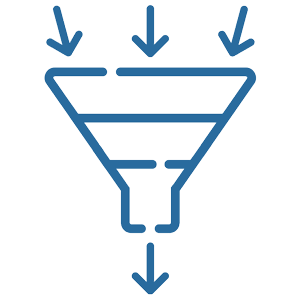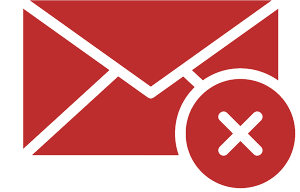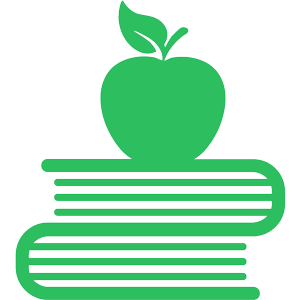
Hi, I’m Will
I’m a full-stack Ghostwriter for Mental Health Speakers based in south-west London. 8 years as a Marketing Consultant. 18+ years in Web Development. I also love brewing specialty coffee at home — fuelling my work.

The 3 Levels of Audiences
Move your mental health audience down this funnel.
1. Rented Audience
Generate wide attention using social media and search traffic to your website.
- Access to massive distribution
- High shareability
- Social content shown to 5% of your followers, up to 25% if you’re good (you’ll need to pay for better distribution)
- If Twitter or LinkedIn changes or disappears tomorrow, so does your ability to communicate to that audience (risky long-term)
2. Owned Audience
Create a direct relationship with your customer through an email list.
- You now own the relationship with your audience
- High ROI opportunity to convert them to paid services
- Low shareability and discoverability
3. Monetised Audience
Turn your rented and owned audiences into paying customers through:
- Courses
- Products
- Book sales
- Subscriptions, etc.

Which means… Building any sort of digital business is very simple.
Here is your 3 step strategy:
ATTENTION ➔ RETENTION ➔ ASCENSION
- Attention: Create engaging educational content on social platforms (your rented audience)
- Retention: Capture a percentage of rented readers ➔ to your email platform (your owned audience)
- Ascension: Convert a percentage of those owned email subscribers ➔ to paying clients (your monetised audience)
Lots of attention, capture emails, convert to paid services.
That’s the game.
✉️ Why does email matter?
If you have a huge social audience or a high-traffic website: You are leaving so much money on the table if you’re not capturing emails.
- ROI of paid social media marketing: £2.80 for every £1 spent.
- ROI of email marketing is £36.00 for every £1 spent.
Social media is great for getting attention. But your email list is where people spend their money.
(Most Paid Ad campaigns rarely see a return on investment. It’s a brutally expensive learning experience to get that right.)
For sales, email kicks socials butt every day of the week.
And that’s what I do!
I help mental health speakers convert attention ➔ into bookings for their events and courses through:
- Educational Email Courses
- Newsletters
Which grows your owned email list.
Let’s talk or email will@clarity.work (or keep scrolling to learn more)

The 3 biggest mistakes most people make when building an email list
I get it — you have to start somewhere. You need to capture email addresses on your social media and website. Those are the basics. But here are some of the most obvious mistakes most people are making.
Mistake 1: “Join My Newsletter”
For the love of all that’s holy, don’t say:
- Join My Newsletter
- Sign Up To Get News & Updates
- Stay Up To Date
That’s like saying, “Hey, mind if bother you?”
No one wants that.
You’ll end up with a very small audience.
If you’re not effectively capturing email addresses, you’re still missing the opportunity to move from attention ➔ to retention.
Mistake 2: You Offer A Discount
Why would you start with a discount?
Don’t you want to see if a customer wants to buy at full price first? Discounts are better used later in the sales cycle — not in the first 5 seconds of landing on your website.
When you offer a discount right away, you signal two things:
- Your product wasn’t really full price
- This is a transactional relationship
How many times have you instantly unsubscribed once you got your 10% off coupon? For me: EVERY. SINGLE. TIME. Because…
- I already got the full benefit of signing up (a cheaper product)
- Now I’m done 🙃
I don’t want a salesy email pinging my inbox for things I have no interest in. There is no “relationship” here. There is no ongoing benefit to stay subscribed. So I’m out.
Discount codes are a terrible opt-in incentive for building a vaulable email list. They lower your value.
Mistake 3: Using Typical ‘Lead Magnets’
If you’re anything like me, those checklists, sample chapters, 20-page PDFs are collecting “digital dust” in my downloads folder.
These are lead magnets. You give an email address. You get a PDF or quiz result. (In exchange for your email.)
The problem is:
- Most lead magnets are never read
- Most of the time, lead magnets don’t respect the medium — why do I need to give you an email address to get a downloadable PDF? Here you go fakeemail@madethisup.com
So, great, you got their email! But aren’t you trying to build an email relationship with them? Tell me how valuable they are if they…
- Never read your material
- Didn’t experience a benefit from your expertise
- Don’t open any more of your emails
- Unsubscribe immediately
There is no sustained interest.

The Big Question:
How do you create an engaged and growing email list?
An email list where your audience:
- Convert from rented followers into your owned audience
- Open and read your email
- Experience benefits from your expertise
- Build trust that you’re an authority in the field
- Stay subscribed
- Happily become interested and curious about your paid services?
Answer:
Educate around a valuable problem.
Read this slowly…
Free education around a problem your audience experiences is your marketing superpower.
Example 1:
- NO: Get News, Updates & Offers
- YES: Practical tips to help you to feel less distracted and more present at work each week (in under 3 minutes)
Example 2:
- NO: Get 10% Off My Meditation Book
- YES: Learn how to become calm like water over the next 5 days
Example 3:
- NO: Download A 10-Page Book Preview PDF
- YES: One mindfulness thought a day from my book to help you practise happy detachment (while still being kind and caring)
Everyone is attracted to learning. It invites curiosity and there’s an obvious benefit to signing up.
Your audience need to experience a connection to a problem you can educate them on.
- Help your audience
- Identify where they struggle
- Demonstrate competency
- Establish trust
What do you think you’re reading right now? I set up a problem. Now I’m educating you on the answer.
I offered something of value.
By doing so, I (hopefully) increased my value to you.
If I’ve been successful, I have:
-
Framed the problem
And made you aware how valuable solving that problem is. -
Made you feel the problem:
I did this by helping you understand all the big mistakes at hand and why people are wasting time and money on things that don’t work. -
Been immensely helpful:
I gave away enough practical knowledge to help you understand the solution.
And I set this up so you would have the question: “If he just gave that away for FREE, what happens if I work with him?”
Which is the last part:
- Positioning: I have soft-selled myself as an expert on building an email lists for mental health speakers. I haven’t hard pitched you on anything. I just showed you:
• The problems are valuable
• I know a thing or two on how to solve them
Which is the point in your email marketing where you would say:
“Hey, I’m really good at helping you avoid those problems and get this result. Would you like to check out my course or paid event?”
And I say, “Where do I sign?”
So, here’s how I help…

Educational Email Courses
(EECs)
I ghostwrite a 5-day Educational Email Courses for mental health speakers.
EECs not only grow your email list (moving your rented audience to your owned audience), they are automatic marketing machines that sell your services, courses, and events for you.
What is an EEC?
A 5-day email sequence (1 email a day for 5 days) that solves a valuable problem for your audience, moving them from Point A ➔ Point B.
- Offer a powerful outcome
- Educate over 5 days
- Train your audience to open your emails
Then, once you have kept your promise, you hard pitch your services in a second email sequence.
- You’ve already demonstrated value and trust for free.
- You offer the logical next step to get the results they want.
This is a high-conversion strategy for:
- nurturing sales
- building an audience
Book a 1:1 Consultation
or email will@clarity.work
Can you give an example?
Here’s mine: mentalbootcamp.co.uk
It’s called ‘Work From Home Mental Bootcamp’. It’s for people who Work From Home.
- Point A: distracted focus, inaction, and lack of momentum
- Point B: mental fitness and regaining ambition
My promise is: Mental Fitness In 5 Days.
The content is: Overcome The 5 Biggest Mistakes People Who Work From Home Make With Their Mental Health.
- Mistake 1: You Let Your Phone Exploit Your Attention
- Mistake 2: You Trust Profit-Driven Businesses To Care About Your Wellbeing
- Mistake 3: You Start The Day In A Fog
- Mistake 4: You Don’t Listen To Yourself
- Mistake 5: You Put Others Before Your Needs
Why do EECs work?
- Your audience are trained to open your emails
- Its a marketing machine on autopilot
- High opt-in rate, high open rate
- Establishes you as an authority
- Offers free value
And if we did it right, your audience is primed for the next logical step: doing business together. It’s a high-conversion tool to nurture your audience towards your paid services.
And the best part?
You write it once, it runs forever.
Included:
⭑ A high-converting Landing Page
This is the page where people sign up for your email course.
You can get your opt-in rate as high as 50%+ if you drive people to a single landing page like mine.
- Did you notice how the email field is instantly active when the page loads?
- Did you notice that there are no other links to get distracted by?
- The sign up form and call to action are ‘above the fold.’
- It's one page. There's one action.
- You sign up or you close the window.
Included:
⭑ A post-course Sales Sequence
After you have successfully delivered your promise you move the subscriber onto a FOMO email sequence (yes, Fear Of Missing Out).
You hard pitch them your paid services:
- Explain how your service or event works
- Share testimonials
- You can (at this point) even offer a short discount!
- Create urgency
The audience were already primed to buy during your education sequence, because you showed them the value of the problem and how and why your service is best positioned to solve that issue.
Once they (a) buy or (b) conclude the sales sequence — they are then moved on to your newsletter and you go back to offering them free value (with a little soft-selling of your services).
Book a 1:1
or email will@clarity.work
Let’s dig in to the details:
You are the expert
My expertise is packaging up your expertise and formatting it for email courses.Capturing your ideas, synthesising it into content, and representing your voice is my entire job.
An EEC gives you back hours of time
You need 7 hours to build trust (Daniel Priestly, author of Key Person Of Influence). That’s a lot of social media posts. And there's no guarantee that your posts will reach the same person repeatedly.
Each email is 800 to 1200 word emails, delivered right in your audience’s inbox on consecutive days in a specific sequential order. It’s outcome-related so when people sign-up, they “buy in” and invest the time in order achieve the result.
Your EEC works for you on autopilot
You build it once and it converts forever. It’s a little sales machine that runs automatically in the background, nurturing and developing your audience.
Your job is simply to share it wherever you get attention.
EECs cover the 3 conditions people need to buy
- Logic (does this make sense?)
- Likeability (do I know and like you?)
- Urgency (created in your FOMO sequence)
Why is this perceived as more valuable than other content?
It’s packaged up in a way that creates incredible value for your audience. Sure, they could just be 5 blog posts. But when you package it up as an email course, give it a through-line, and get clear on the overall outcome: it becomes an different animal.
The ‘packaging’ increases the value.
And when the promise is 5 days to achieve X outcome, an EEC is:
- Long enough to pack in a tonne of value, but not ‘so long’ that it becomes a giant commitment.
- They span a week, which makes EECs digestible and easy to consume.
Why not start with a newsletter?
I recommend an Educational Email Course BEFORE you launch a newsletter—so that you can start capturing emails on autopilot, without having to worry about writing content consistently.
(Writing a weekly, bi-weekly, or monthly newsletter is a waste of your time if you don't have an effective way of getting people onto your list.)
Start with an Educational Email Course.
Book a 1:1
or email will@clarity.work